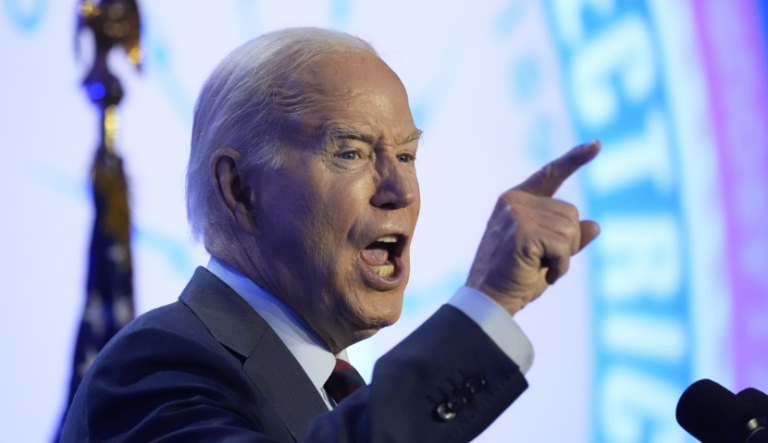Written by Michael Thompson.
Economic indicators under President Biden paint a dire picture, contradicting claims of robust growth. The touted economic expansion often fails to clarify that it’s buoyed by substantial government stimulus and public financial aid, which distorts the real health of our economy.
White House and Media Spin Versus Consumer Reality
The White House and supportive media outlets claim the economy is thriving, a narrative not reflected in consumer sentiment, which shows signs of decline despite recent minor improvements. These nuances are often spun positively by the administration, which selectively cites data to fit its narrative, whether at the macro or micro level.
Energy Prices and Consumer Perception
This month, average gas prices have risen by 7% from the previous month, although they remain below the peak of $4.90 reached in 2022. While the administration might view this as a victory, it offers little solace to American consumers and business owners who view the economic landscape as bleak, with little confidence in future stability.
The Specter of Stagflation and Employment Concerns
Despite ongoing high inflation, the threat of recession looms, potentially leading to stagflation—a mix of stagnant economic growth and rising unemployment. Official statements may deny the presence of a recession, deviating from traditional economic definitions and confusing both the public and experts. Moreover, the job market is deceptive; most new positions are part-time or government jobs, not the full-time private sector roles that signify healthy economic activity.
Government Stimulus: A Temporary Fix to Systemic Issues
The economy has teetered throughout Biden’s term, propped up by government interventions that inflate national debt, delaying an inevitable economic downturn. This approach doesn’t resolve underlying economic weaknesses; it merely postpones their impact.
Minimum Wage Hikes and Business Responses
In several U.S. cities, aggressive minimum wage increases to $20 per hour are forcing businesses like retail chains and fast food restaurants to cut back on their workforce or exit markets entirely. Many are turning to automation, such as self-checkout and ordering kiosks, to reduce labor costs, a trend that decreases job opportunities.
Inflation, Mortgage Rates, and the Shrinking Dollar
Under what’s now being called “Bidenomics,” the economy has seen significant increases in gas prices and mortgage rates nearing 7%, alongside declining demand for new mortgages. Real wages, when adjusted for inflation, have effectively decreased, as the price of goods continues to outpace income growth, eroding purchasing power.
The Stark Reality: Decreased Savings and Increased Defaults
The current economic strain has reduced the U.S. savings rate significantly and escalated credit card defaults and auto loan delinquencies to record levels. Many Americans now find themselves borrowing monthly simply to meet basic expenses.
Our Take
The economic policies under President Biden, termed “Bidenomics,” are not merely inadequate—they are counterproductive. They serve to mask the underlying fragility of our economy while setting us on a path towards greater financial instability. It’s crucial to recognize that these policies do not foster real growth or prosperity; instead, they undermine the economic security of American families. The administration must rethink its approach to genuinely support and rejuvenate our economic foundations, rather than continuing down a path that leads to financial distress for the average citizen. This isn’t just economic policy; it’s about the livelihood and future of every American family.



















